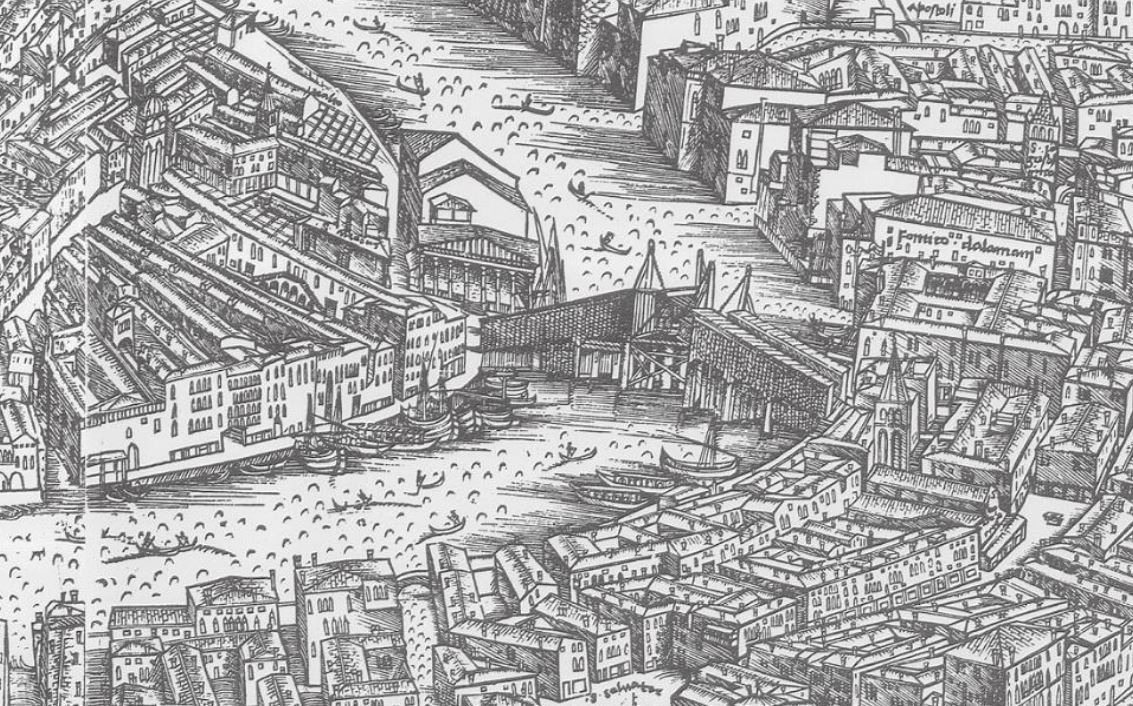
FONDACO I
1222 – 1505
#FondacoHeritage

The word fondaco (fontego in Venetian) comes from the Arabic term fundùq which in turn echoes the Greek Byzantine πανδοχεῖον (pan-dochèion, “the place that welcomes everyone”) and indicates a type of building that was widespread in the Middle Ages and in the Modern Age between the Mediterranean and the Black Sea. Here, by concession of the local authorities, the merchants placed their goods, carried on their businesses and often also resided. The first Fondaco dei Tedeschi was built between 1222 and 1225 in the Rialto area to house merchants and products from Flanders, from the Hanseatic League cities down to Poland. The trade legislation of the Serenissima established that all goods arriving in Venice from Northern Europe should be deposited in the fontego, where they were checked, weighed and then stored, ready for daily trading. Thanks to taxes on trade, this traffic brought high revenue in public coffers. The building quickly became the place where merchants negotiated the sales of metals and precious stones, furs, leather, rare spices, silk, glass, brocades, velvets and laces that came from beyond the Alps and from the East. Following a ravaging fire that broke out in 1318, the government undertook a policy of purchasing land around the building in order to expand the sales and storage spaces while facilitating access. The famous bird’s eye view of the city of 1500, a woodcut commissioned to Jacopo De Barbari by the German merchant Anton Kolb and kept at the Correr Museum in Venice, shows how the fontego had two courtyards and occupied two floors, dimensions that had no equivalent in any other building at that time.
